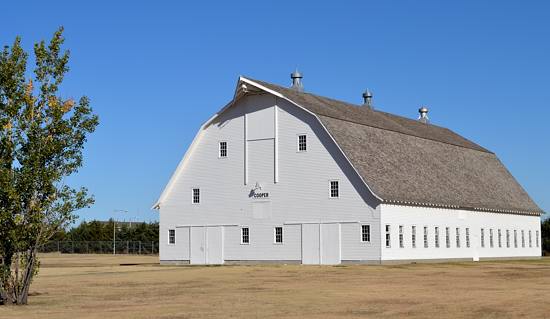
Thursday Sept 29th was the third day in our great trip west. In 2 1/2 days we made it from Florida to Mid Kansas. Hays, Kansas to be exact. All the reports received from friends traveling through Kansas were rather negative: get prepared, psych yourself up because it is a long trip and it’s boring. In our opinion, Kansas was beautiful. In this trip review for travel to Kansas we’ll give several reasons why if you are traveling to the great Southwest United States you might want to consider going through Kansas.
Kansas is known as the sunflower state among other nicknames. Driving along I-70 in late September you are apt to see many wild sunflowers and Black-eyed Susans. Since it is also known as the wheat state you can expect to see gently rolling farm lands and blowing wheat fields. But don’t expect to see amber waves of grain in September- the wheat harvest begins in June.
Although it was too late for wheat, the rolling tall grass prairies are a spectacular site. The hills roll one into another as far as the eye can see buttressed up against the blue sky horizon. At one time there were 140-170 million for acres of tall grass prairies in north America, now only a mere 4% remain and the largest continuous tallgrass prairie land is in the Flint Hills region of Kansas. I-70 takes the traveler right through this most unique ecosystem that hosts 650 varieties of wildflowers, many of which are edible and medicinal in nature.
Wind is also in abundant supply on the rolling prairies of Kansas. In fact Kansas wind resources rank third in the nation averaging for example in Dodge City at 13.9 miles per hour. Driving across I-70 can feel more like a wrestling match with your vehicle than a site seeing tour. Despite the downside of being a windy state, the upside is wind turbine power. The stately white windmills planted in the hills and plains of the Jayhawk State will hopefully, one day, be part of the answer to the nation’s energy crisis.
The 4 major crops of Kansas are corn, wheat, soybeans and sunflowers. In our travels across I-70 we saw acres and acres of a plant that looks like short corn. In doing a little research it seems that this is not corn at all but a grain called sorghum which is used for both human and animal consumption.
Our final destination for the day was Hays. To our pleasant surprise we discovered that Hays is known as a town “Where history walked the streets.” In the late 1800’s Hay’s hosted a number of famous and infamous characters like Buffalo Bill Cody and Wild Bill Hickok. General George Custer and his men also spent time in these parts and you can learn about it all, along with the history of the Voga Germans and how the town was finally tamed by some God fearing men and women at the Ellis County Historical Society Museum.
On day 2 of driving across Kansas to our destination, Colorado Springs, Colorado we discovered that the rolling prairies became plains. Miles and miles of flat corn, sorghum and soybean fields. Still, we agreed that we did not find it boring, but fascinating to be able to see as far as the eye can see acres upon acres of crops. What made this leg of the journey even more enjoyable was stumbling upon the Prairie Museum of Art and History in Colby just off I-70. Their living museum provides an opportunity to see what prairie life was like up close and personal by exploring their hands on exhibits of a 1930’s farmstead that includes a prairie house, a sod house, one room school room, church and more including the largest barn in Kansas pictured at the top.
For us, travel to Kansas and through Kansas on I-70 helped us to appreciate even more those who pioneered the west. The sunflower state is filled with the history of the American West. Don’t miss Kansas in your travel to the Western US, there’s too much Americana to appreciate.
Tags: Destinations
